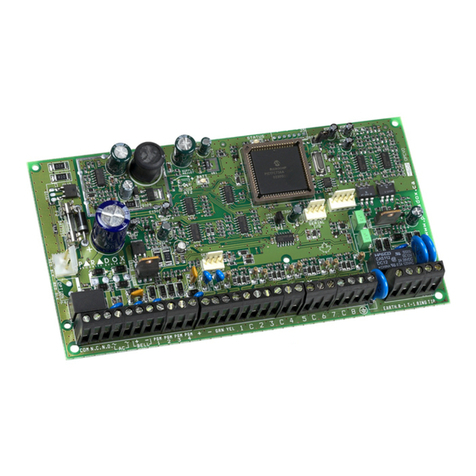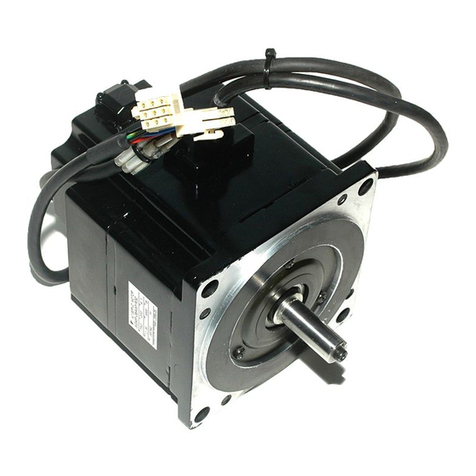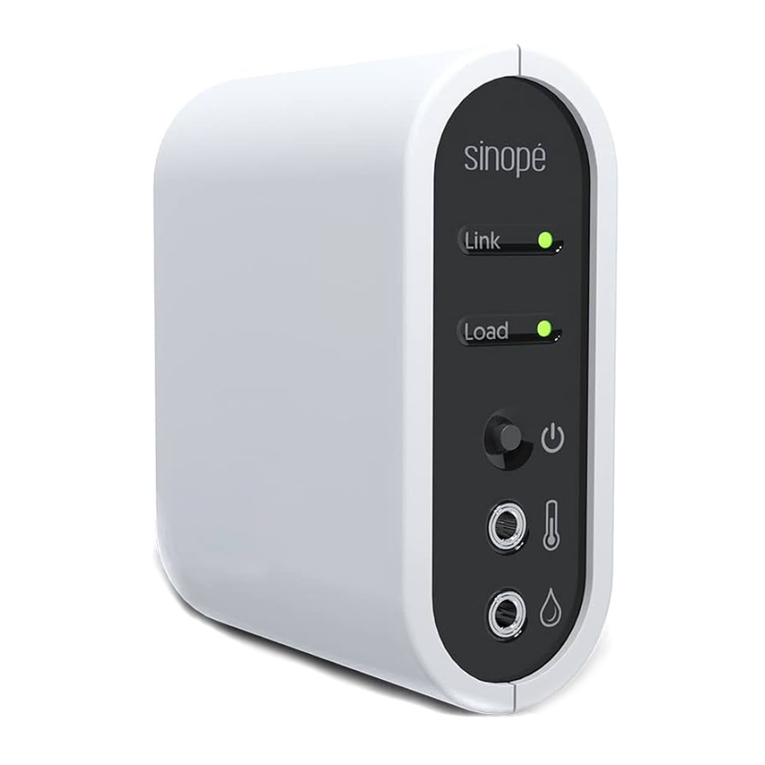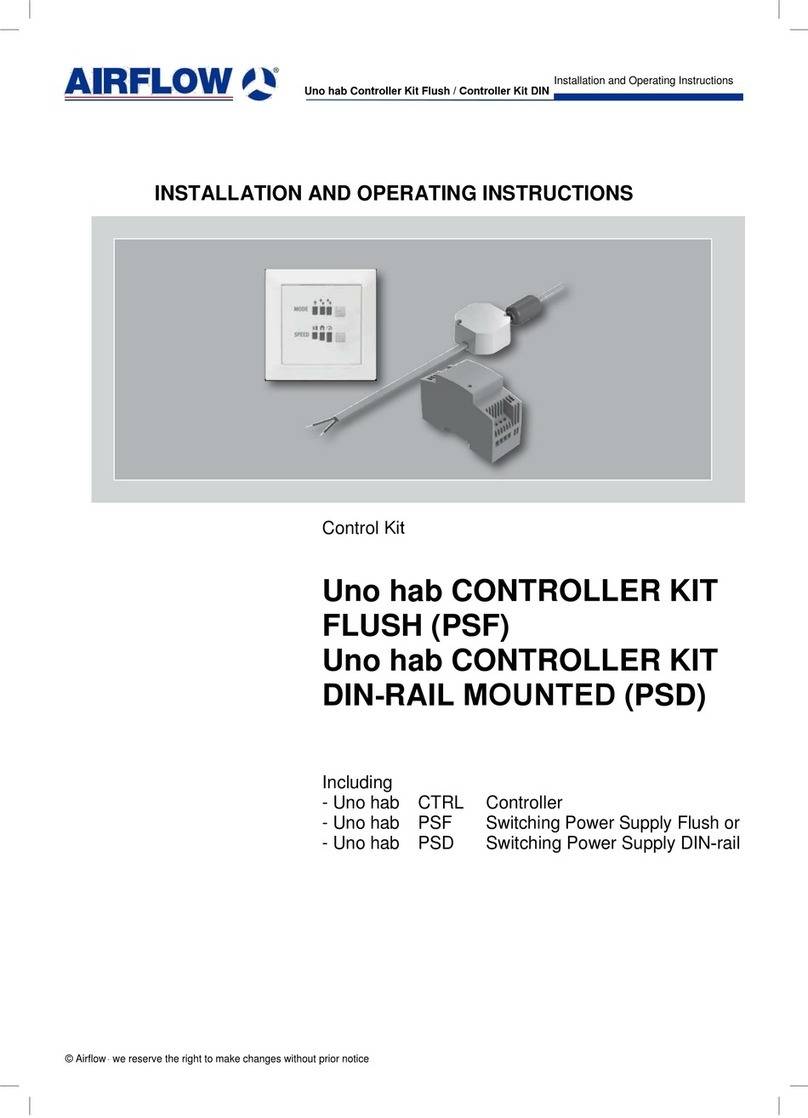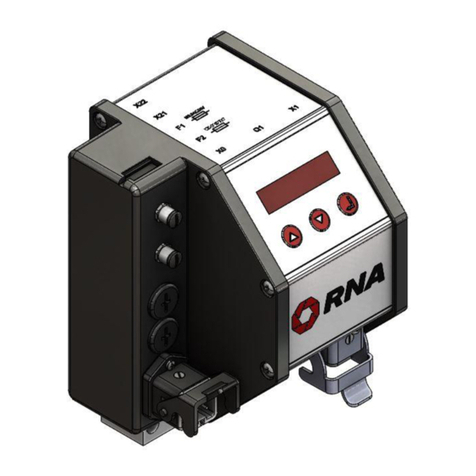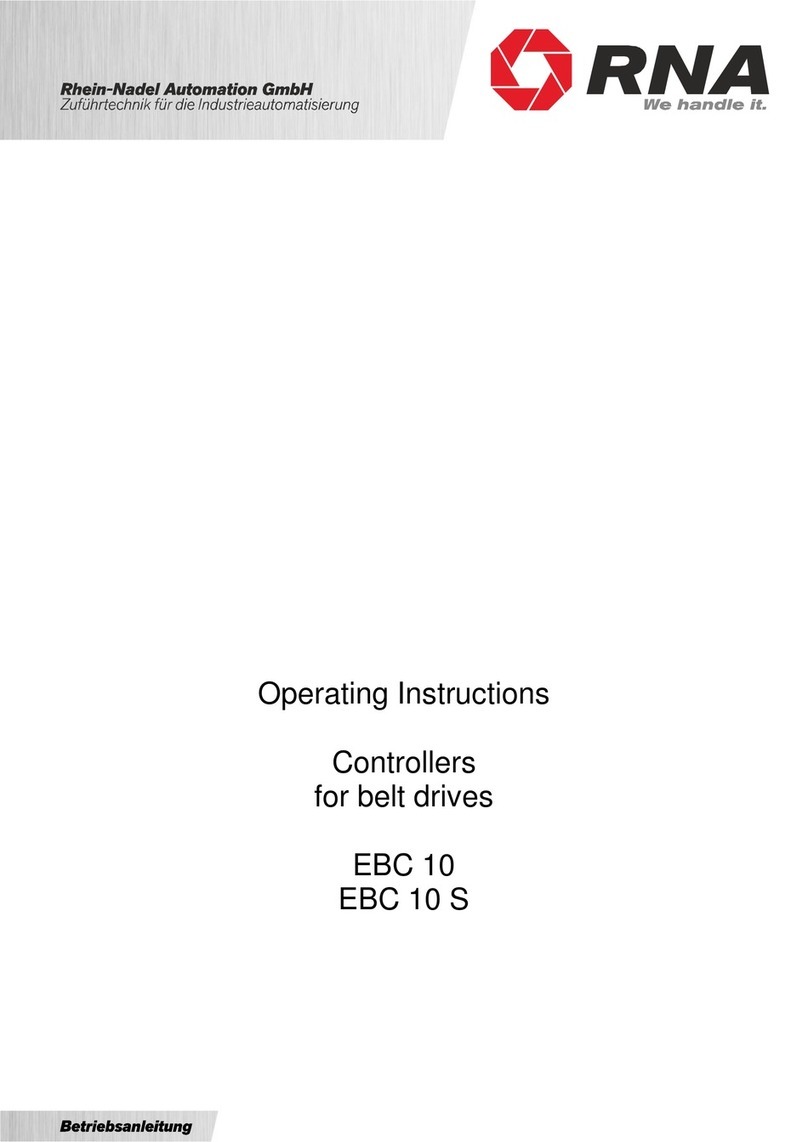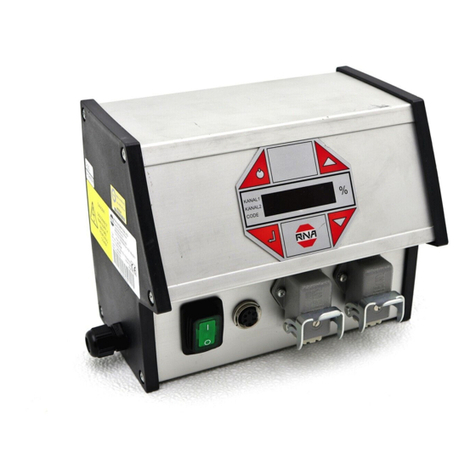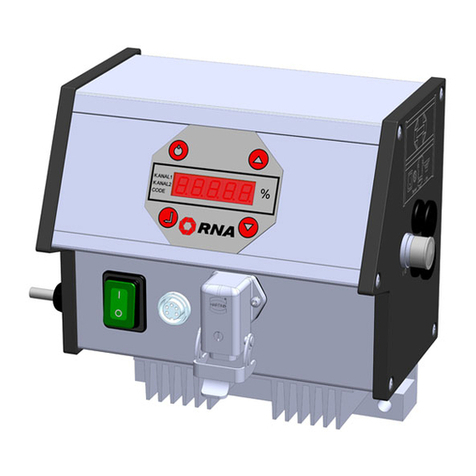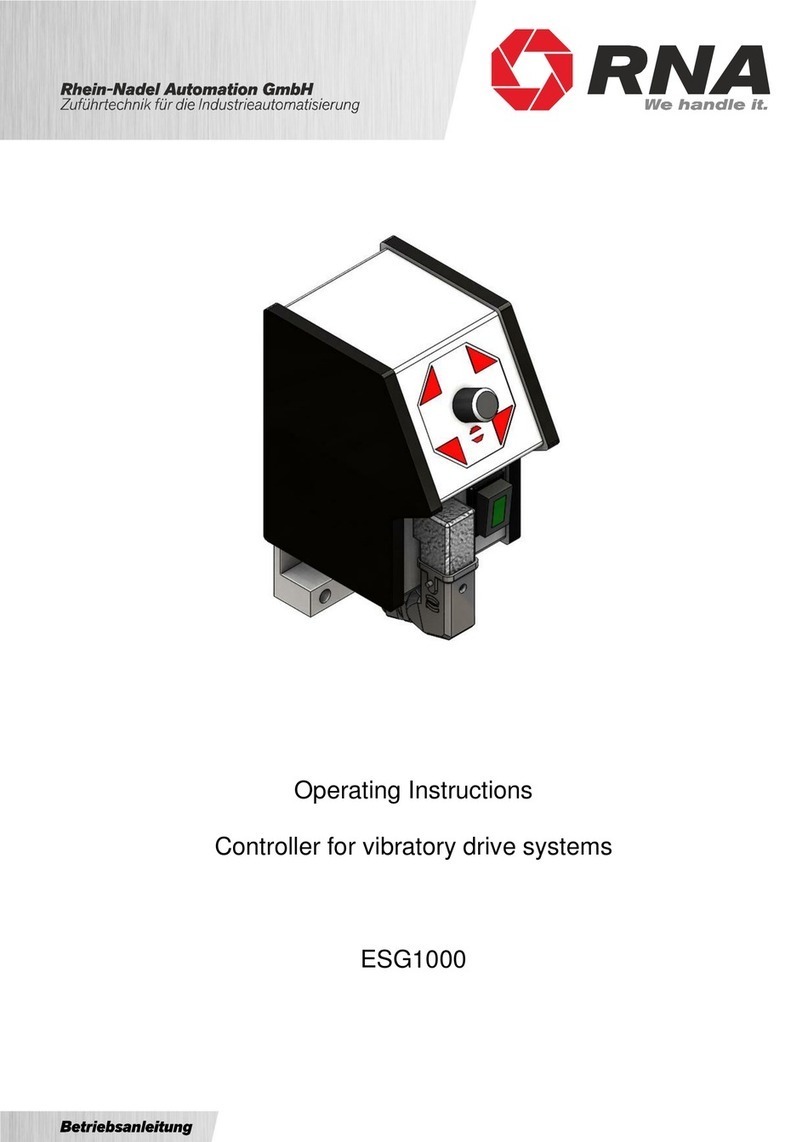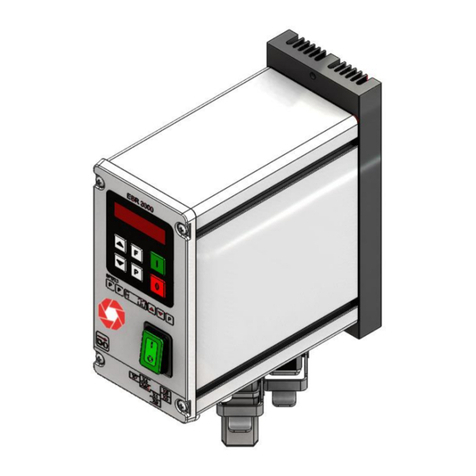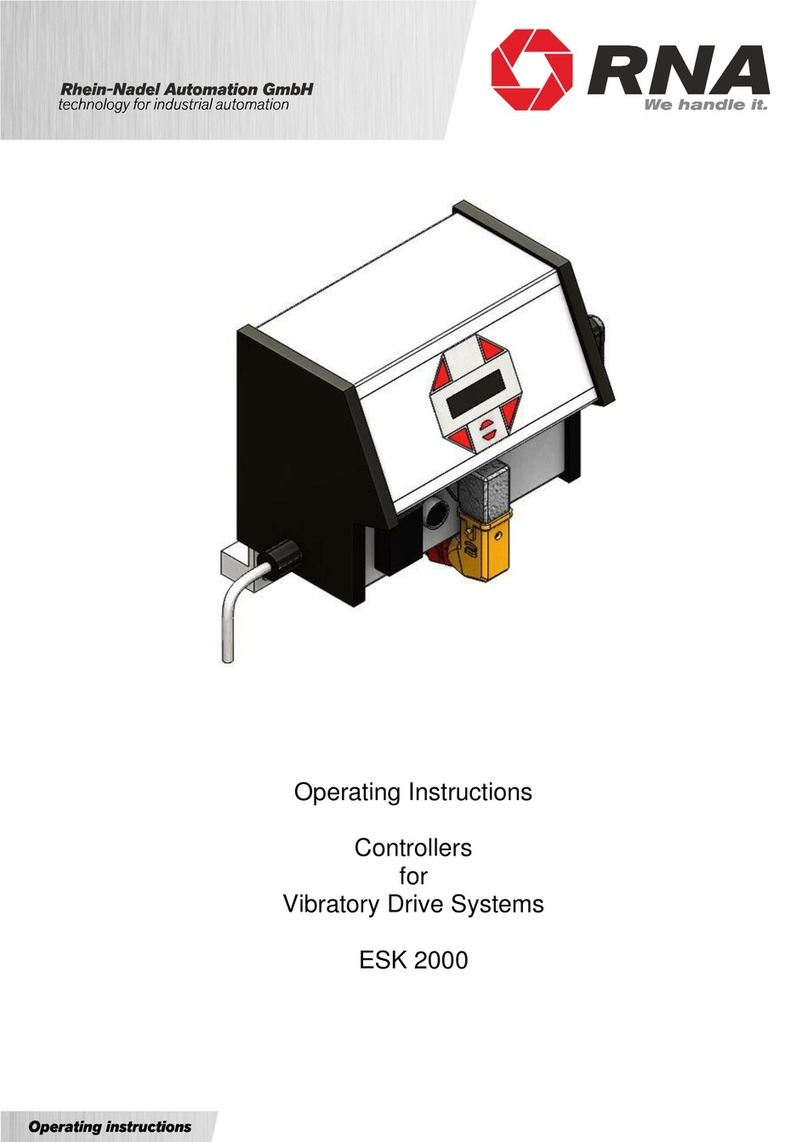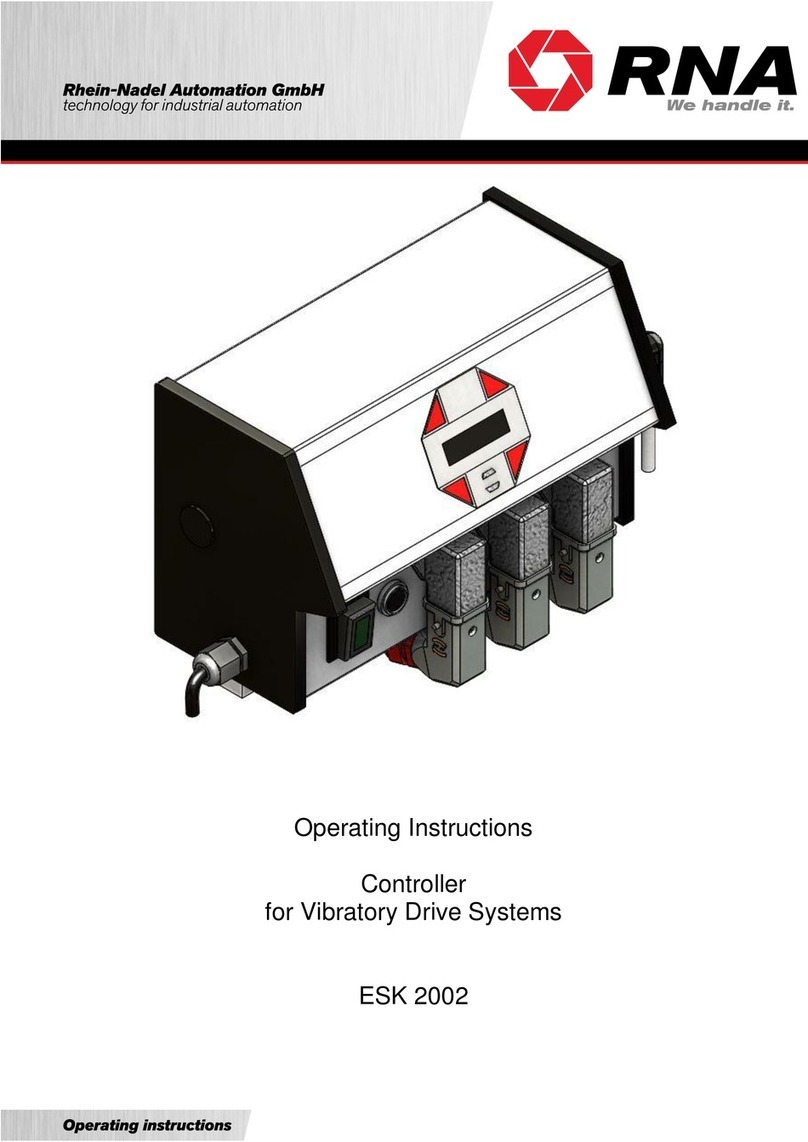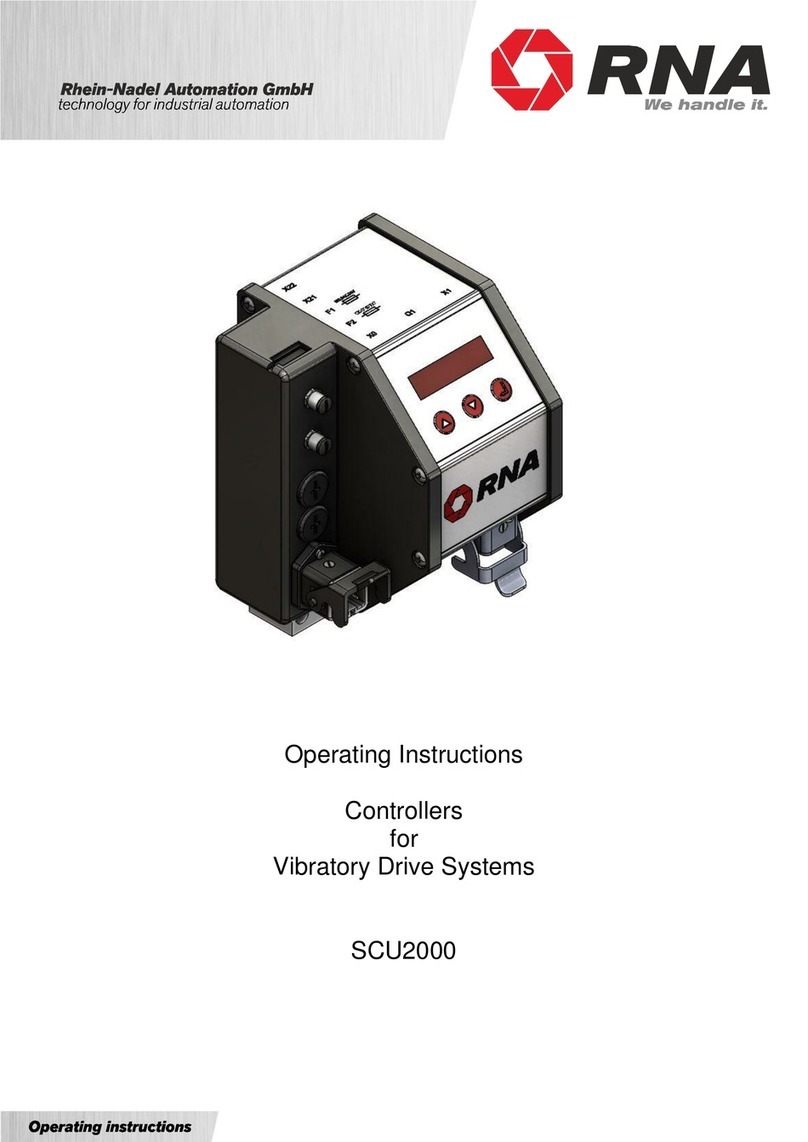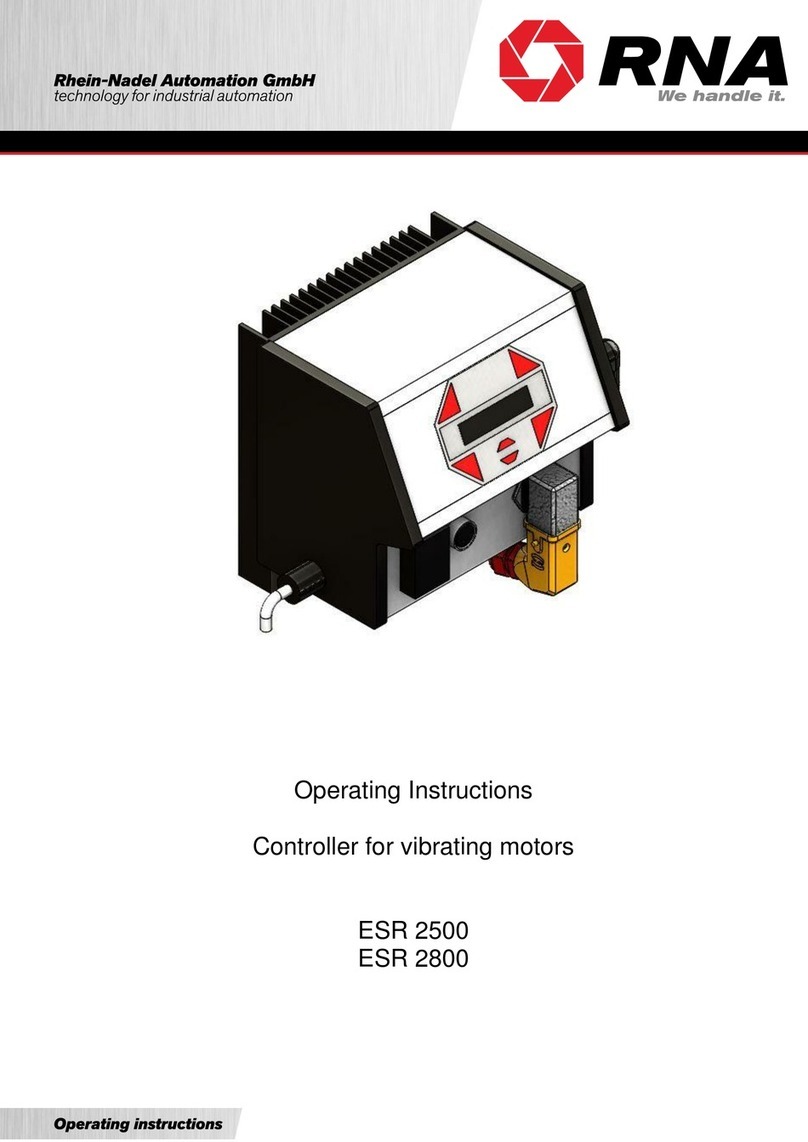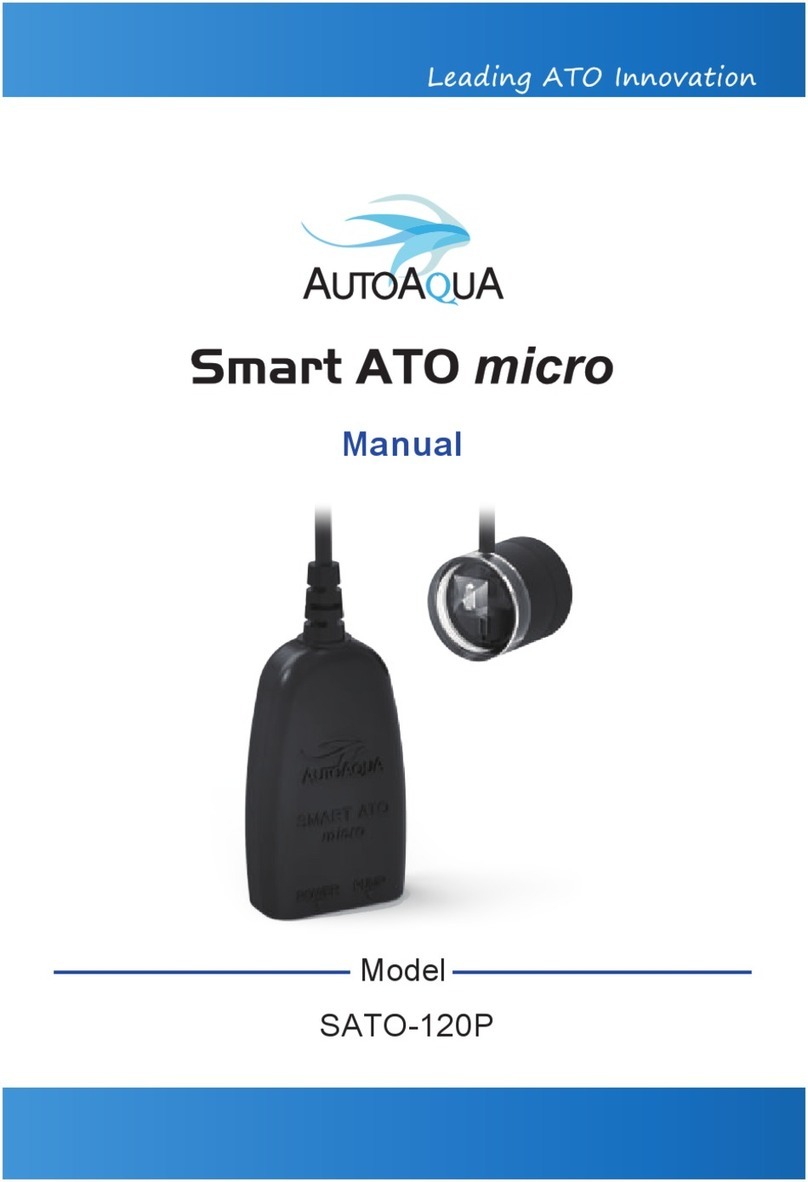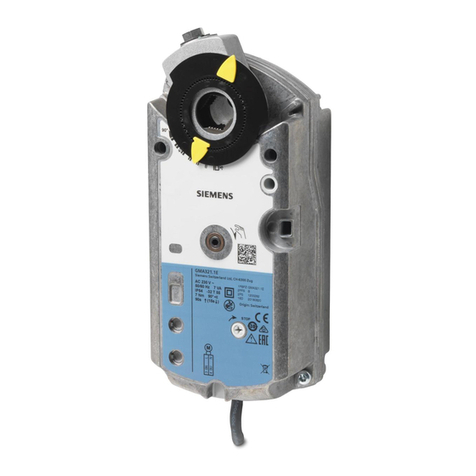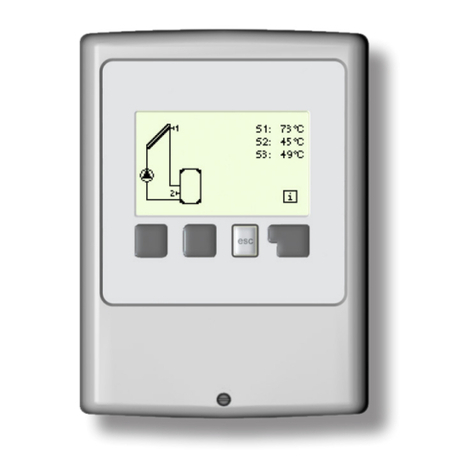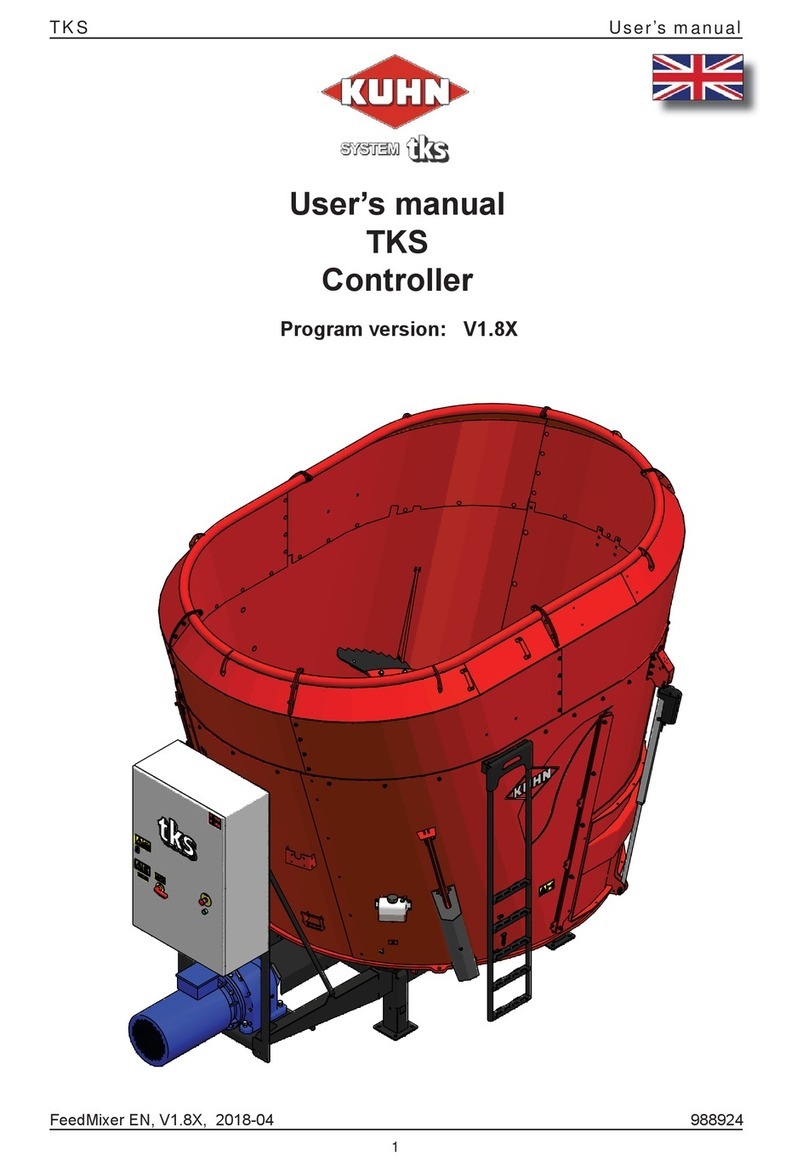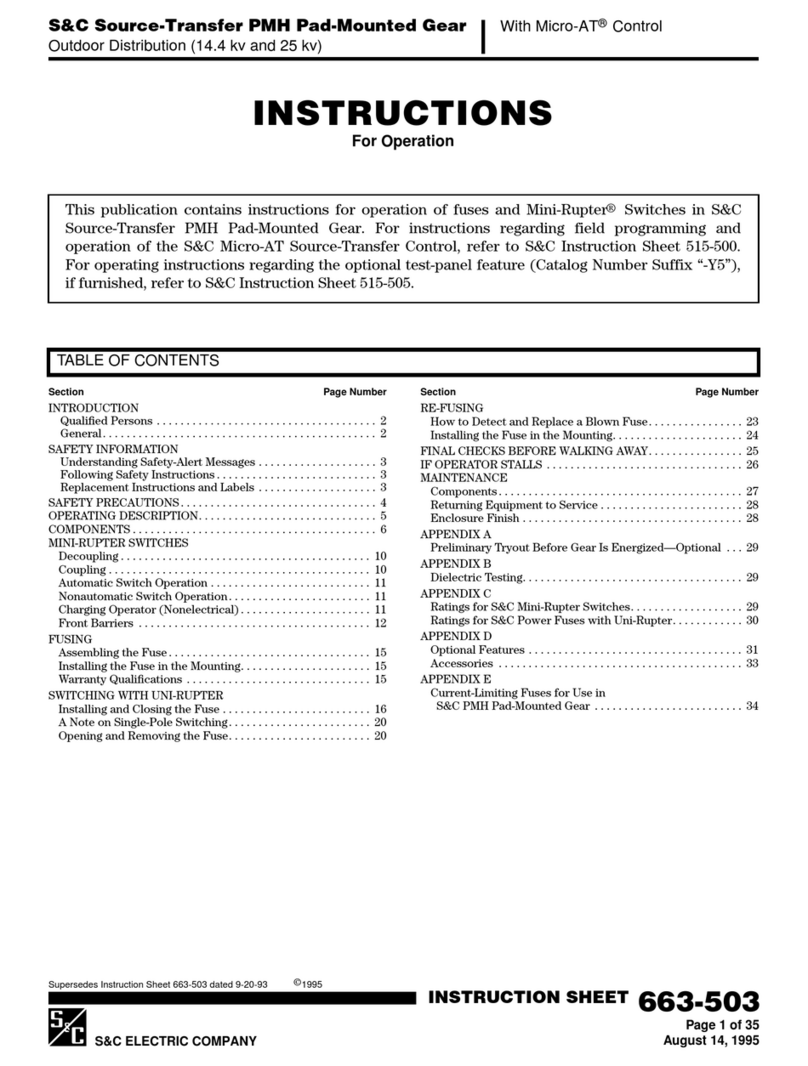Rhein-Nadel Automation GmbH 8
VT-BA-EBC3000_EN_2023.docx
The controllers are factory-set as follows:
•Minimum output voltage: 4.9 Volts;
•Maximum output voltage: 25.5 Volts;
•Maximum load current: 1.5 Amps
In special situations, or following modifications, it may be necessary to readjust these settings. Be sure to
observe the following:
For FB 15 belt feeders, the maximum output voltage and maximum load current must not be set higher and
the minimum output voltage must not be set lower than specified in the list above.
It is also important to know that the potentiometers for output voltage are not completely isolated from each
other. This means that changes to the maximum voltage will result in minor changes to the minimum voltage,
and vice versa. Accordingly, you may need to readjust both potentiometers several times.
The standard setup of the controller is configured so that the belt feeder drive will start as soon as the power
switch is set to ON. If you want to the configure the controller so that it can start/stop the motor in response
to an external enabling signal without disconnecting it from the mains supply, open the controller in accord-
ance with above safety information. Replace the blanking plug in the side of the casing by a size M16 strain-
relieved cable gland to feed through the cable for the enabling signal. There are two ways of enabling:
Closing of a contact enables the controller and operates the belt feeder motor. The connection is made at
terminals XK1.7 and XK1.9, after removing the factory-installed wire jumper. Be sure to observe the following:
•Voltage is present at this connection! Take care to observe cable type and colour as well as insulation
requirements. The contact must of course be a potential-free (dry-type) contact.
•Avoid routing this cable in the immediate vicinity of high-energy switching devices or strong interference
fields.
Connect the starting signal to terminals XK1.6 (0V) and XK1.7 (+24V) and remove the wire jumper between
XK1.7 and XK1.9. The drive starts as soon as a signal between 10 and 30 VDC is present with the correct
polarity. The input is protected against polarity reversal. Using an optocoupler in the controller provides an
isolated input and also permits the installation of non-shielded cables of almost any length. Here too, take
great care to avoid high-energy interferences.
To use reversing duty connect a floating (dry-type) contact to terminals XK1.9 and XK1.8 of the controller.
When direction of rotation is reversed, the motor stops briefly, then starts running in the opposite direction
at the set speed. If reversing duty is not implemented at all, or when the described contact is open, the mo-
tor runs in the default direction of rotation.
For the rest, the conditions are the same as for enabling via a contact.
Connect the voltage signal for reversing duty to terminals XK1.6 (0V) and XK1.8 (+24V) of the controller.
When direction of rotation is reversed, the motor stops briefly, then starts running in the opposite direction
at the set speed. If reversing duty is not implemented at all, or when the described contact is open, the mo-
tor runs in the default direction of rotation.
For the rest, the conditions are the same as for enabling via a via voltage signal.
